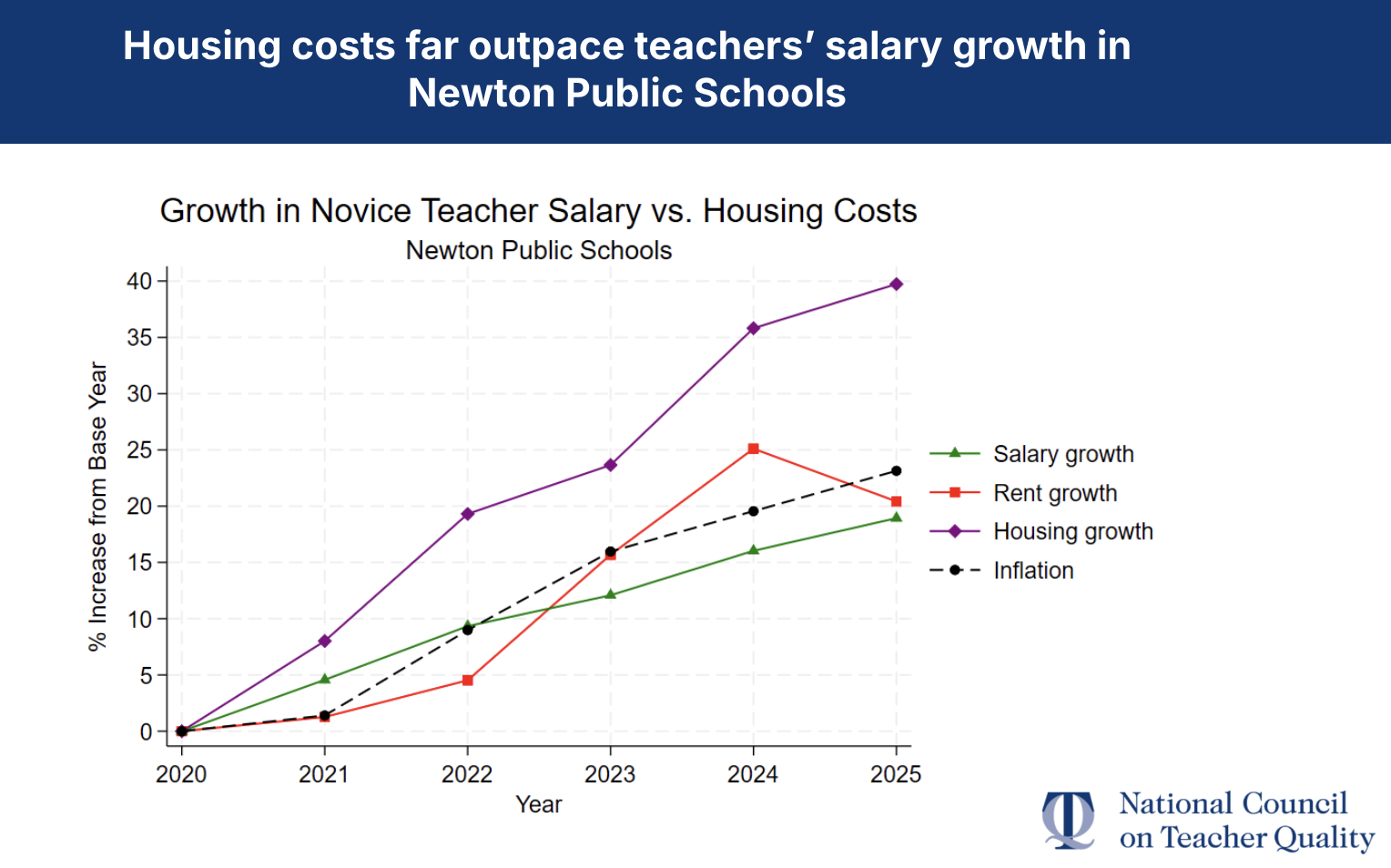Priced out: The growing challenge of teacher retention and housing costs
How can Newton attract and retain great teachers if they can’t afford to live here? That was the central question at “Priced Out,” a discussion hosted by Newton for Everyone on September 30 that showed how the city’s housing shortage directly impacts its schools. The event featured Heather Peske, President of the National Council on Teacher Quality, and Ari Kenyon Vance, a Newton South High School guidance counselor, soccer, and track coach.
Peske presented a sharp analysis of the financial realities facing Newton's educators. Her data revealed that a novice teacher would need to spend 46% of their salary on a typical one-bedroom apartment in Newton, far exceeding the 30% standard for affordability. Even after five years of experience, that figure only drops to 38%.
The challenge is even greater for homeownership; Peske's analysis showed it would take a teacher with a master's degree an estimated 32 years just to save for a 20% down payment on a median-priced home in the city.
“This isn’t just a teacher issue: it’s a community issue. We need more homes that more people can afford,” Peske said. She explained that when educators are forced into long commutes, it diminishes their ability to be fully integrated members of the school community, whether as coaches, club advisors, or simply as neighbors.
Ari Kenyon Vance shared the human side of these statistics, telling one colleague's story directly: "I have a colleague, she's in her late 20s, an amazing counselor, and she drives every single day from Fitchburg. That's a 70-minute commute each way... She told me last week that she's thinking about whether this is sustainable. She loves the kids, she loves the school, but the sheer exhaustion of that drive, and feeling like she can't stay for a student's game or a concert because she has to face that long drive home... It’s forcing her to reconsider her career here. And her story is not unique." As The Newtonite student newspaper reported, this directly impacts students, who feel the loss when beloved teachers leave or can't participate in the school community outside of class hours.
The discussion made it clear that while competitive salaries are important, pay raises alone won't solve the retention problem. As the Newton Beacon highlighted, the gap between teacher salaries and housing costs continues to widen, creating a difficult situation for veteran teachers and pricing out new educators entirely.
If Newton wants to keep its excellent teachers, the city needs to allow more homes of all types to be built, especially near schools and transit. Concrete actions are needed, such as legalizing triplexes and smaller apartments near village centers, prioritizing workforce housing in new mixed-income projects, and streamlining the permitting process for new housing.
The conversation doesn’t end here. Check out the presentation slides or watch a recoding of the event on YouTube
Notes on the chart:
Novice teacher = teacher in their first year of teaching
Between 2020 and 2025, the home prices in Middlesex County increased about 40%.
Between 2020 and 2024, growth in rental costs grew by about 20%, but prices started to decelerate between 2024 and 2025.
Between 2020 and 2025, the inflation rate was approximately 23%.
Between 2020 and 2025, the average MA and BA salaries for novice teachers across the 8 districts in this sample grew at identical rates, about 19%.
Not shown, the salary growth rates look similar across experience levels (5, 10, 15, 20, and 25 years of experience).
This is also similar to the national landscape. That analysis, which includes 2019-2025 (one additional year), found similar patterns.
Takeaway: Salary growth is outpaced by inflation, home prices, and rental prices. Keep in mind that these are growth rates. The graph illustrates the widening gap between housing costs and beginning teacher salaries since 2020. Housing affordability was already challenging for teachers before 2020, meaning that these growing disparities exacerbate an existing problem.
(In order for teacher salaries to “catch up” to housing affordability, we would need to see salary growth outpacing housing costs.)

